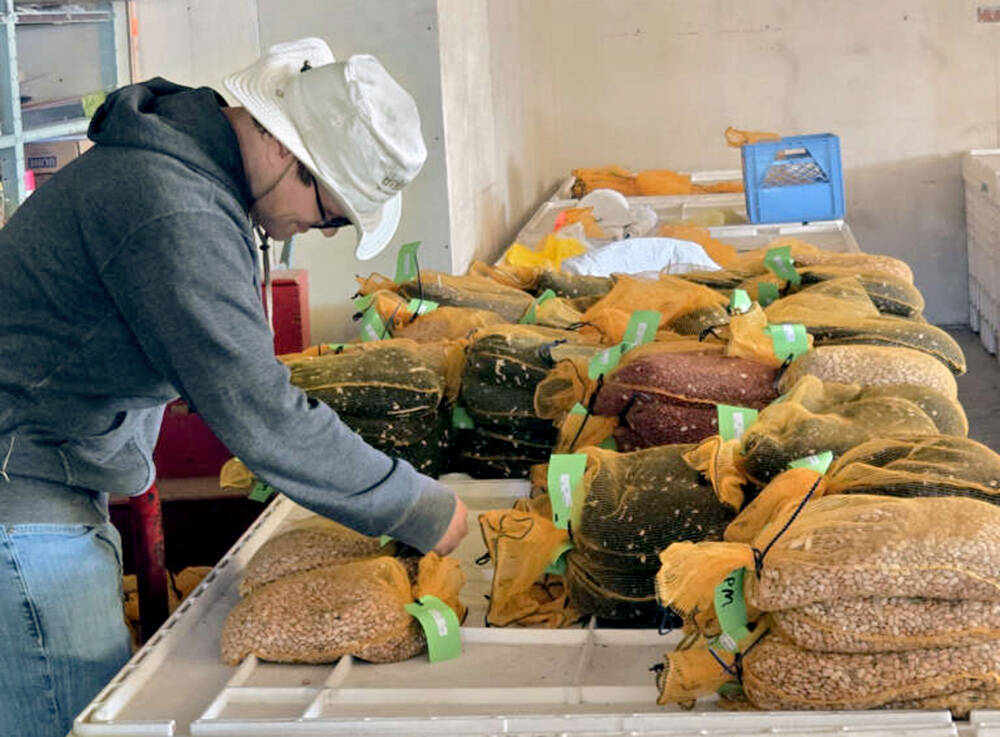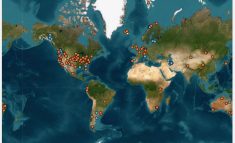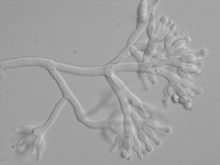A team at technology/consulting company Precision Planting has completed research that compares banding fertilizer applications to broadcasting. Banding brings a higher yield potential.
“The soil bank unreliably controls the fertilizer,” said Cory Muhlbauer at the 2019 Winter Conference put on by Precision Planting, referring to broadcast-applied fertilizers.
When a grower broadcasts fertilizer on the soil surface, it’s up to the soil’s ions as to when that fertilizer is released to the seeds and the plants.
Researchers said that when fertilizer is banded into the soil it improves the overall health and productivity of plants compared to broadcasting applications.
Read Also

Bean research breeds community giving
University of Guelph dry bean researcher Dr. Mohsen Yoosefzadeh Najafabadi champions sustainability by donating surplus breeding program beans to support food security and community art initiatives.
Why it matters: A decision on whether to band fertilizer or broadcast can have significant implications when it comes to purchasing equipment.
Precision Planting team research shows that to improve fertilizer efficiency, making it more available to the plant, 50 per cent of the nitrogen and phosphorus should be applied banded into the soil when planting corn.
Most farmers place these nutrients in a band two inches to the side and two inches down from the seed, but Precision Planting went with a band three inches down and one inch to the side of the seed, knifed into the soil to minimize the risk of volatilization and optimizing the root uptake.
In their trials, completed in Pontiac Illinois at the Precision Technology Institute, they found that the field with banded fertilizer had consistent uniformity of maturity, which was most noticeable at tasselling. This was compared to the other parts of the fields.
The plot with no phosphorus or potassium applied hadn’t even begun to tassel. The final plot, which had a broadcast of di-ammonium phosphate (DAP 18-46-0) and potash, showed inconsistent plant maturity level with variable tasselling.
Phosphorus is a difficult fertilizer to manage. Its immobility makes it difficult for the plant to extract the nutrients, said Muhlbauer. It’s a fertilizer that needs to be placed where plants can access it.
Precision Planting wanted to take their phosphorus research a step further to see if the pulsing of the liquid starter fertilizer would have a yield benefit over a continuous stream and improve the seed safety of the fertilizer.
The company compared the application of the starter fertilizer on the seed, off the seed, in a continuous stream and as a broadcast. They found that the broadcast application of the fertilizer was behind in the maturity compared to that of the on and off streams, which were pretty consistent with each other.
As well, no yield was gained between the pulsing and continuous stream of the fertilizer. They found that by the time the corn spikes the ground, its seedling roots are already six inches in length on each side and 100 per cent of the seed row has tapped into the fertilizer.
Nitrogen, much like phosphorus, can be easily lost after application. Nitrates are easily leachable, they can volatilize and the plant is in competition with the microbes to consume the nitrate particles.
The placement of this nutrient is important.
Researchers found that the band application of nitrogen was the best practice with minimal volatilization loss and maximum corn root uptake. “As the plant grows the crown roots are the primary sources for nutrients and they’ll grow right into the nitrogen band,” said Muhlbauer.
“The crown roots are the primary feeders and they will go right through that nitrogen as they grow,” said Jerry Muhlbauer, a Precision Planting employee.
It’s important to get the placement of fertilizer right to ensure that the optimal uptake of the nutrients. To get the placement right, Precision Planting suggested dual band application of fertilizer using a knife.













